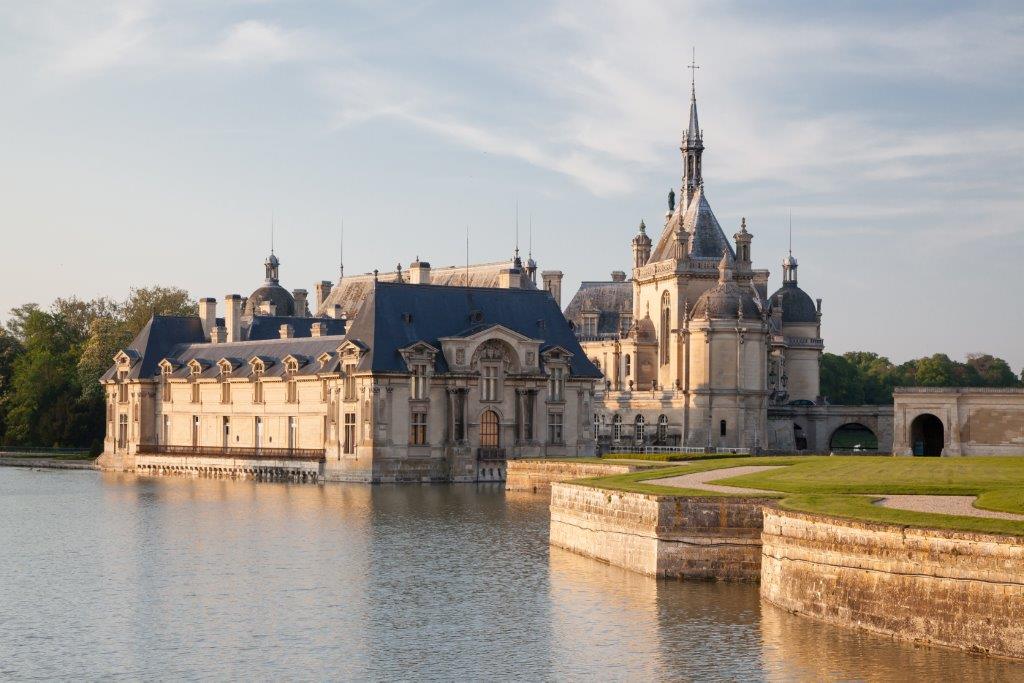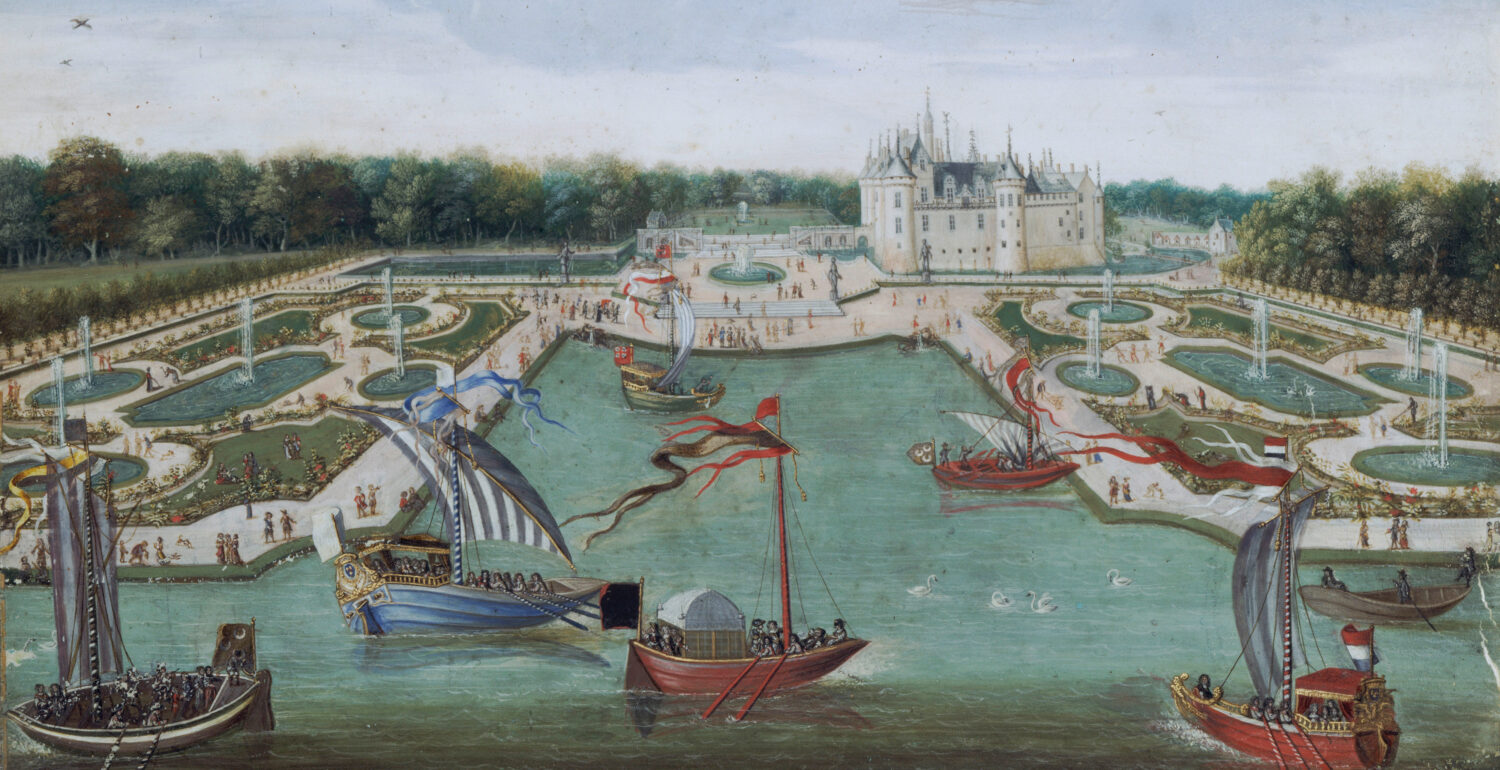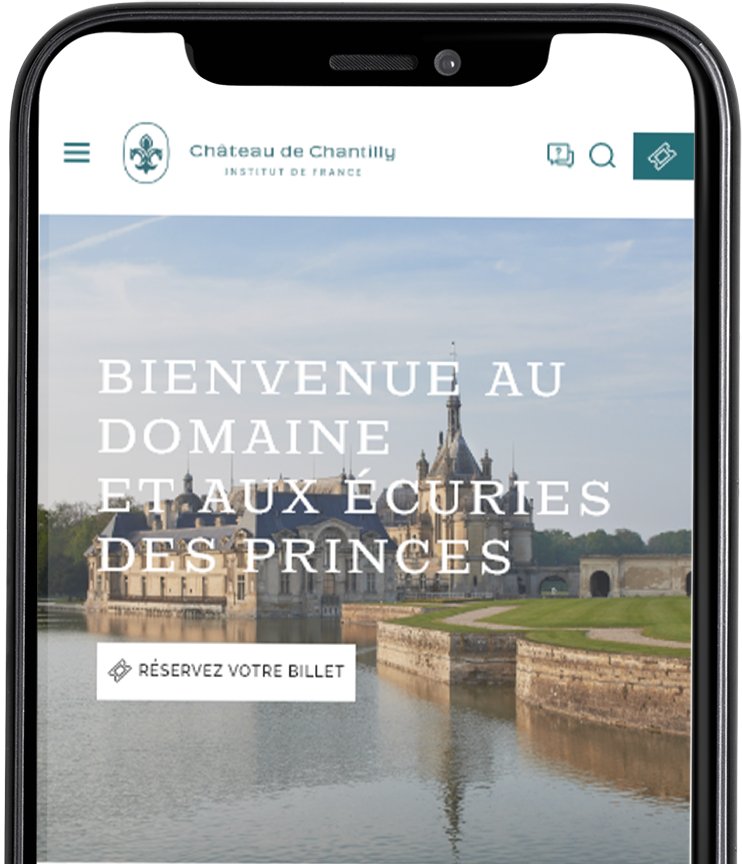Eight centuries of History
Shaped from the Middle Ages to the 19th century by its various owners, the history of the Château de Chantilly is closely intertwined with the History of France. The Château de Chantilly belonged to several princely dynasties who contributed to its development down through the centuries.
The Middle Ages
The château was originally a fortified building constructed on a pile of rock in the marshlands of the Nonette river valley, controlling the road from Paris to Senlis.
From the 11th century, the Bouteiller family were the first lords of Chantilly. In the 14th century, when the Hundred Years war devastating the region, the fortified château was pillaged during the peasant uprisings known as the Jacqueries in 1358.
The d’Orgemont family acquired the estate in 1386 and had a new fortress built there.
From then on, the château would never again be sold, but inherited. In 1484, Guillaume de Montmorency inherited the estate.
During the Renaissance
At the start of the 16th century, Constable Anne de Montmorency, companion-in-arms to François I, owned the Château de Chantilly.
Having had the opportunity to admire numerous palaces during the Italian Wars, the latter decided, from 1557-1558, to have the architect Jean Bullant build a château for recreation, in the style of the French Renaissance, which was an adaptation of the Italian Renaissance style.

Anne de Montmorency 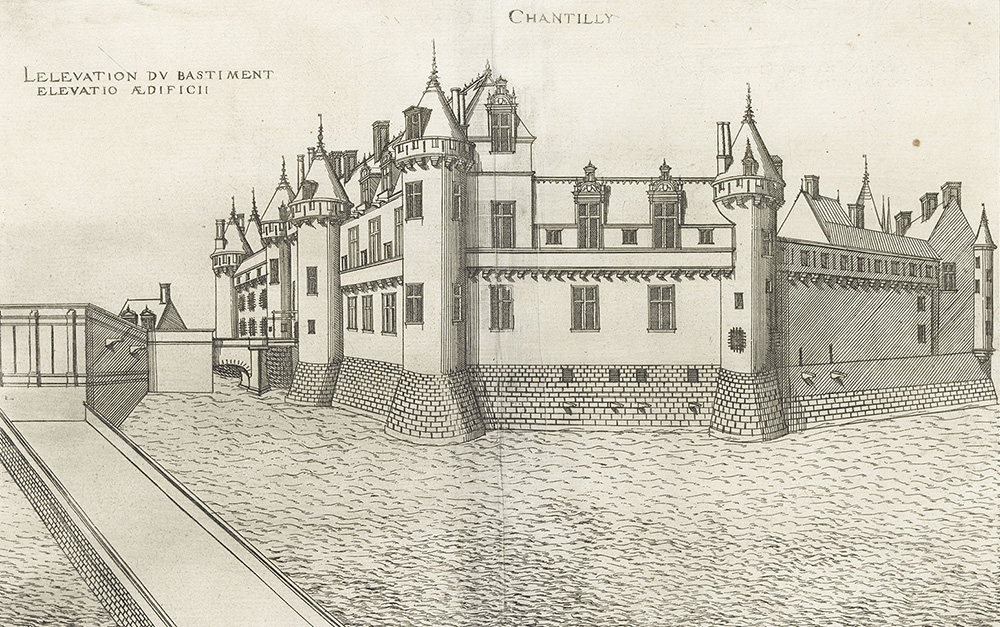
A classical era
Henri II de Montmorency, a descendant of Constable Anne ,was beheaded at the start of the 17th century for having rebelled against Richelieu, Louis XIII’s minister. In 1632, the Château was confiscated by the King.
In 1643, it was returned to Charlotte de Montmorency, wife of Henri II de Bourbon, Prince of Condé.
Louis II de Bourbon, known as the Great Condé, their son and a cousin of the King, inherited it. He organised a courtly life in Chantilly that was as vibrant as that of Versailles, inviting all the greatest artists of his time: Molière, Racine, La Bruyère, La Fontaine, Bossuet… It was he who commissioned Le Nôtre to design the sumptuous French style gardens.
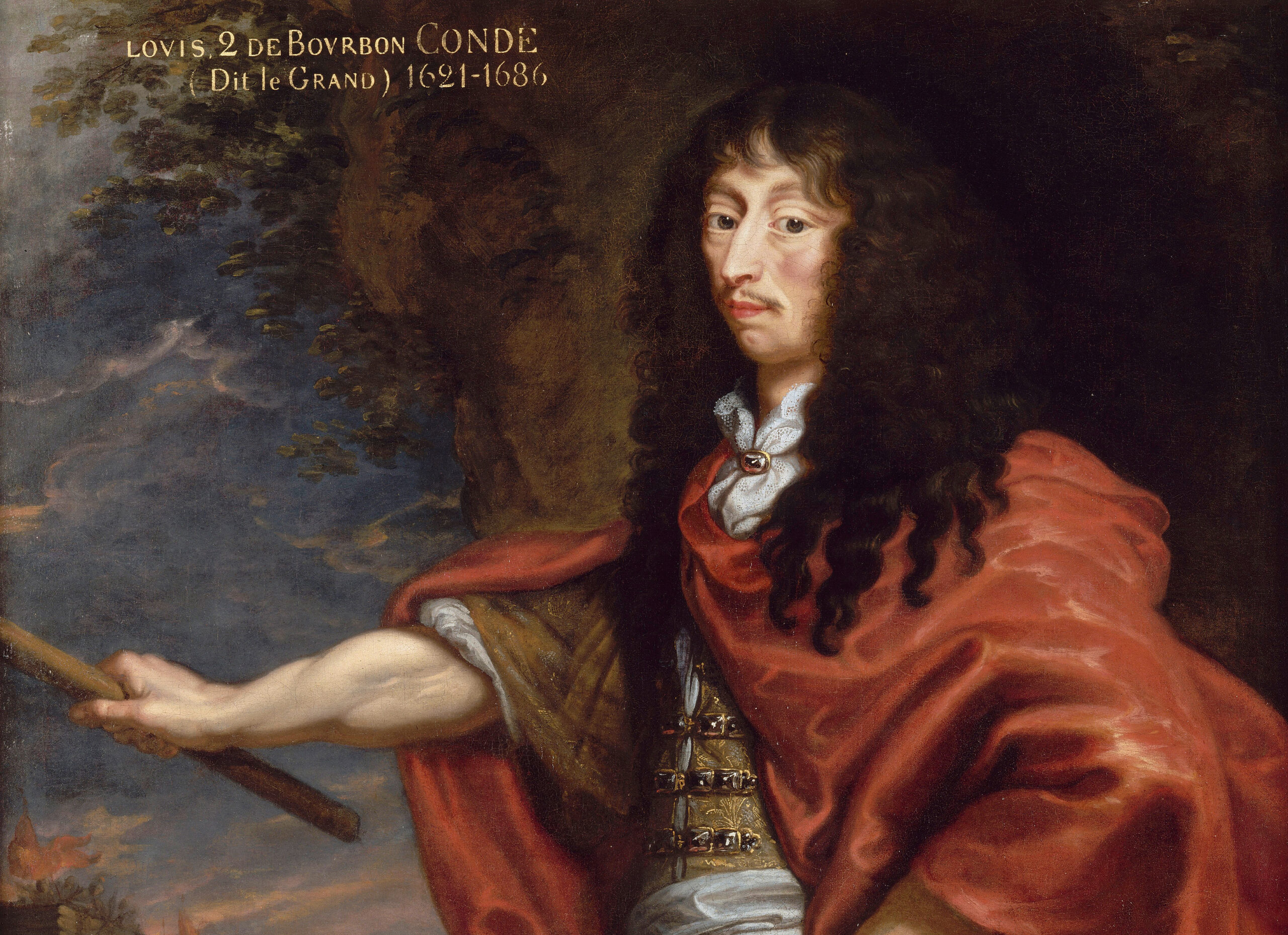
The Great Condé 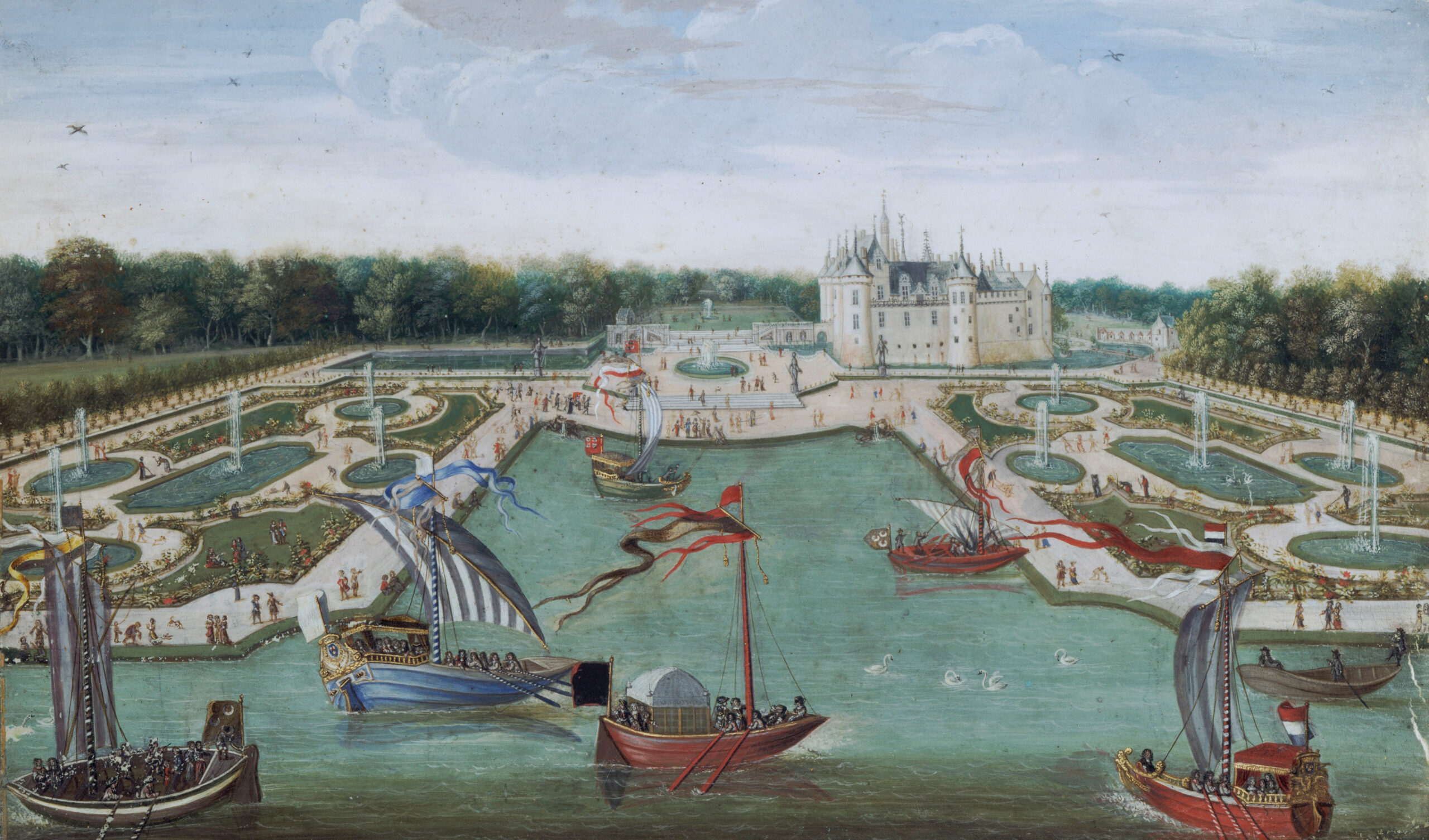
The château and the “French style” gardens in the 17th Century
The Enlightenment (18th century)
1719: Louis-Henri, Duke of Bourbon, had his architect Jean Aubert design a new classical building on the foundations of the old fortified Château, as well as the Great Stables. The architect also designed part of the urban planning for the town of Chantilly.
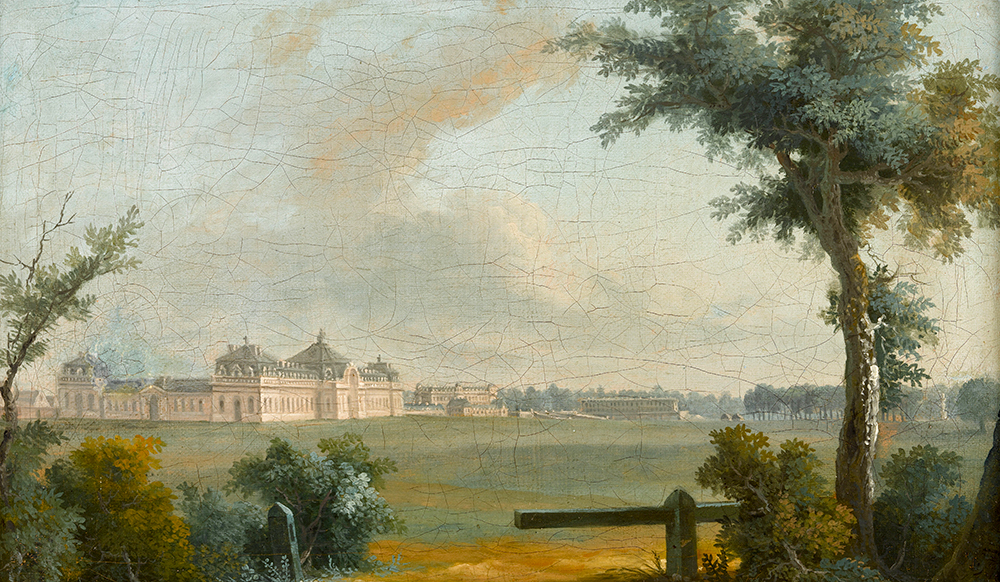
The great stables in the 18th Century 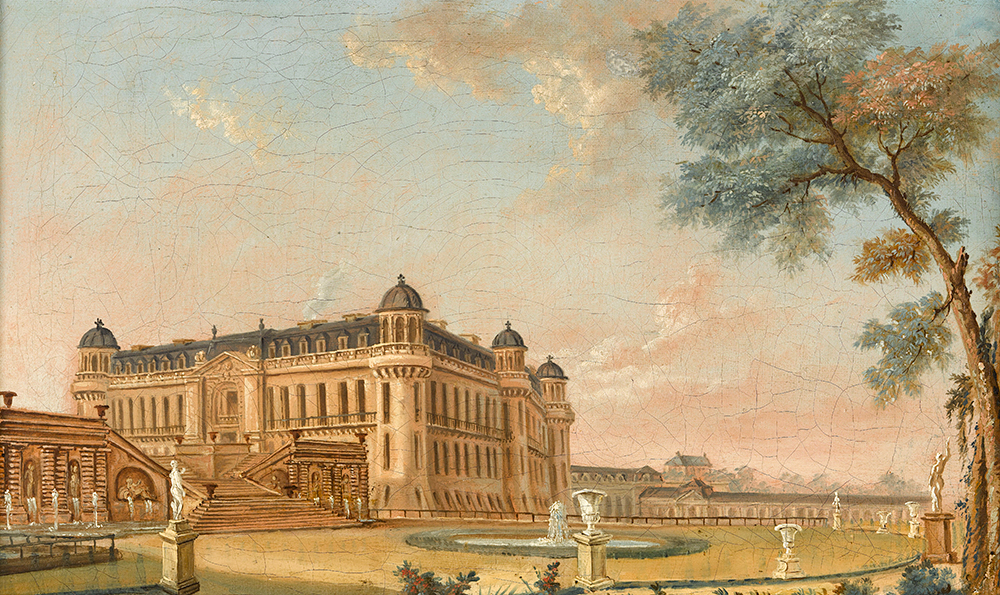
The château in the 18th Century
After 1740: Louis-Joseph, Prince of Condé, continued his father’s work: construction of the Hamlet, the theatre (now gone), the Jeu de Paume and the Château d’Enghien.
During the Revolution
1793: The estate was dismantled via the sale of land and purchase of the Château by the Bande Noire (demolition syndicates), in order to demolish the buildings and sell the stones. In fact they only demolished the Grand Château.
1804: The young Duke of Enghien was executed by order of Napoleon Bonaparte. The Bourbon-Condé lineage ended on his death.
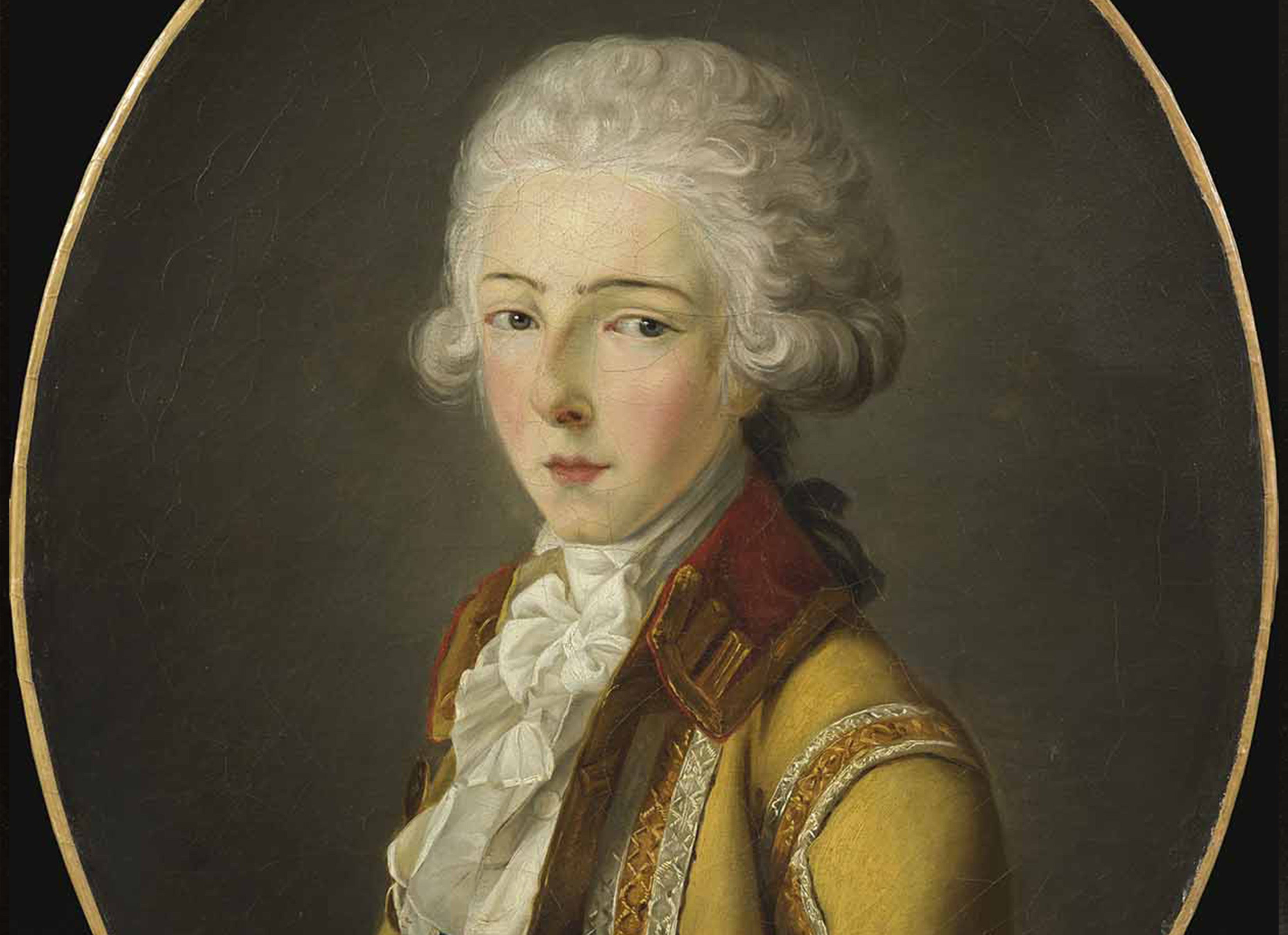
The Duke of Enghien 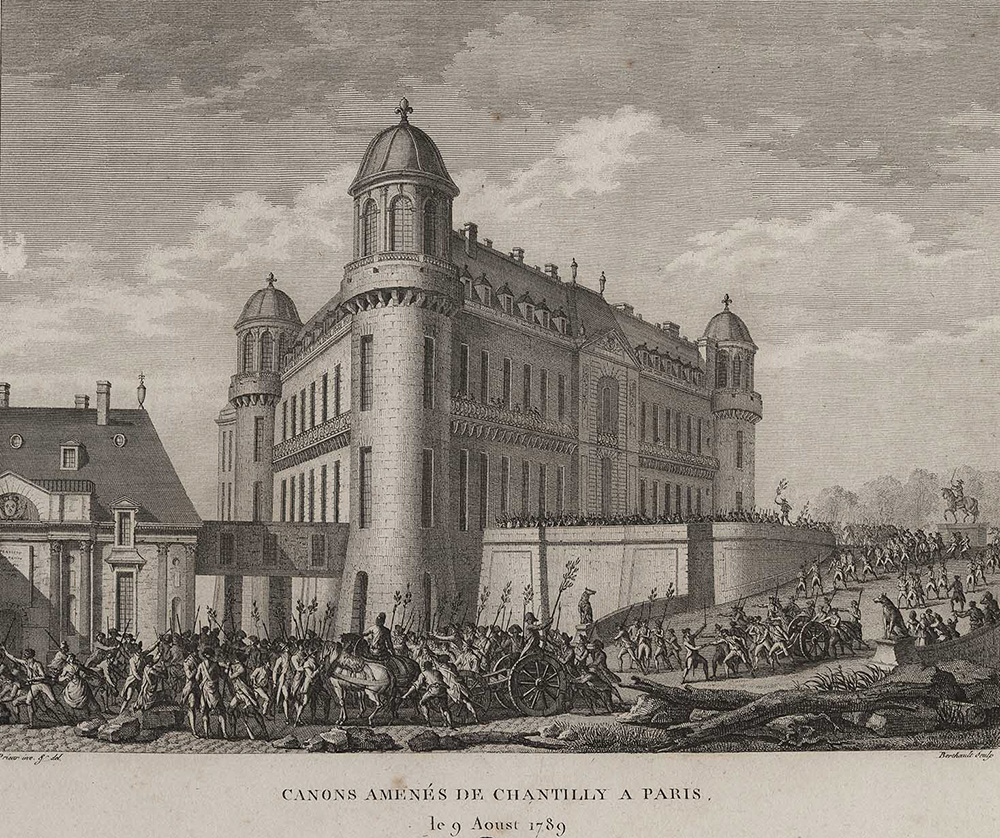
In the 19th Century
1830: As the Duke of Bourbon had lost his son, the Duke of Enghien, he chose his grand-nephew, Henri d’Orléans, Duke of Aumale (1822-1897) and son of King Louis-Philippe as his heir.
1845: After marrying his cousin, Marie-Caroline de Bourbon-Siciles, the Duke of Aumale commissioned Eugène Lami to decorate the Private Suites in the Petit Château, which had survived the revolutionary destructions.
In 1848, at the fall of his father’s regime, the July Monarchy, the Duke went into exile with his family in England (in Twickenham in particular). Their exile lasted more than twenty years.
1875: Having returned from exile, the Duke of Aumale decided to rebuild the Grand Château to house his collections and called on the architect Honoré Daumet to do this.
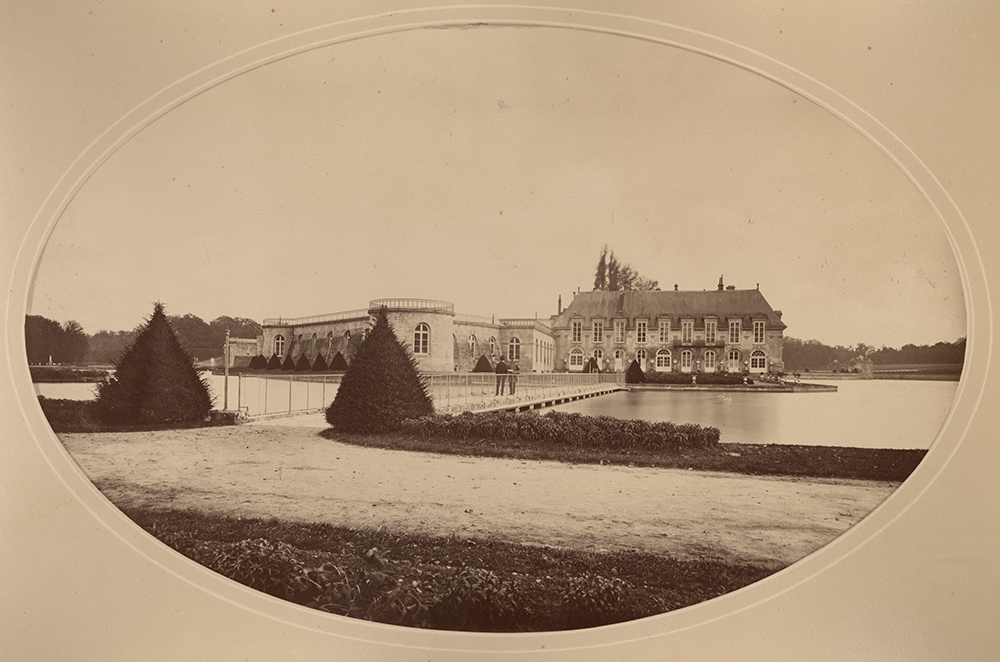
The Grand Château destroyed during the Revolution and the Petit Château 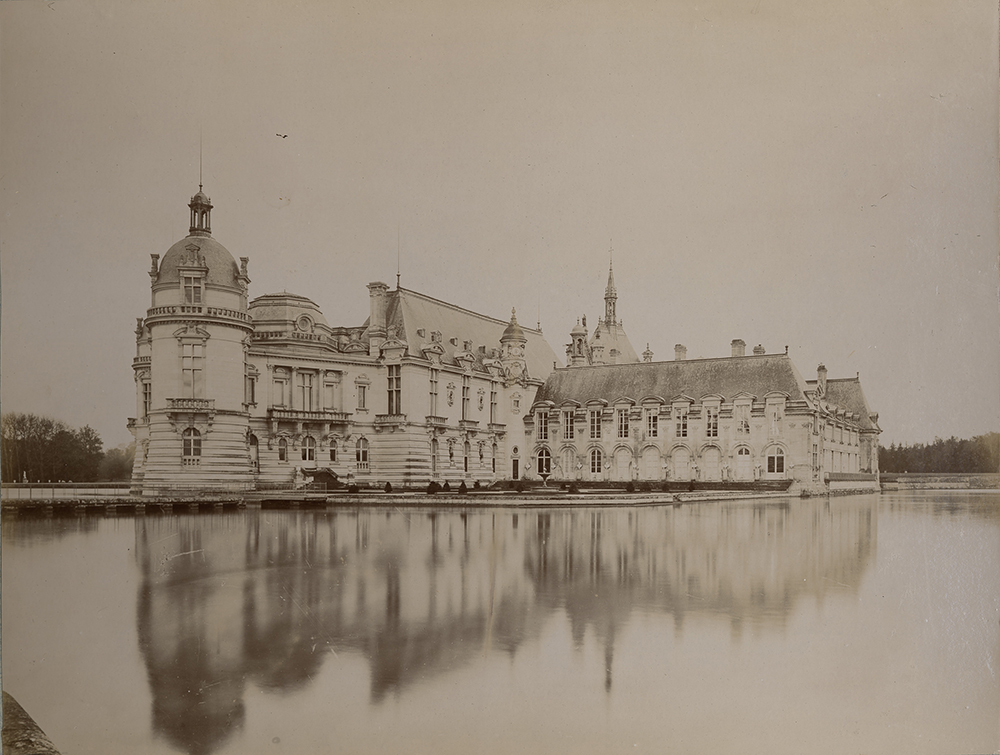
The Duke of Aumale decided to rebuild the Grand Château in 1875
1884: As he had no heirs (his two sons, Louis and François, died young), the Duke of Aumale left his entire estate to the Institut de France, and completed this bequest in 1886 by an immediate donation with right of usufruct.
17 April 1898: In keeping with the wishes of the Duke of Aumale, the estate opened its doors to the public on under the name of the “Condé museum” less than one year after his death.

